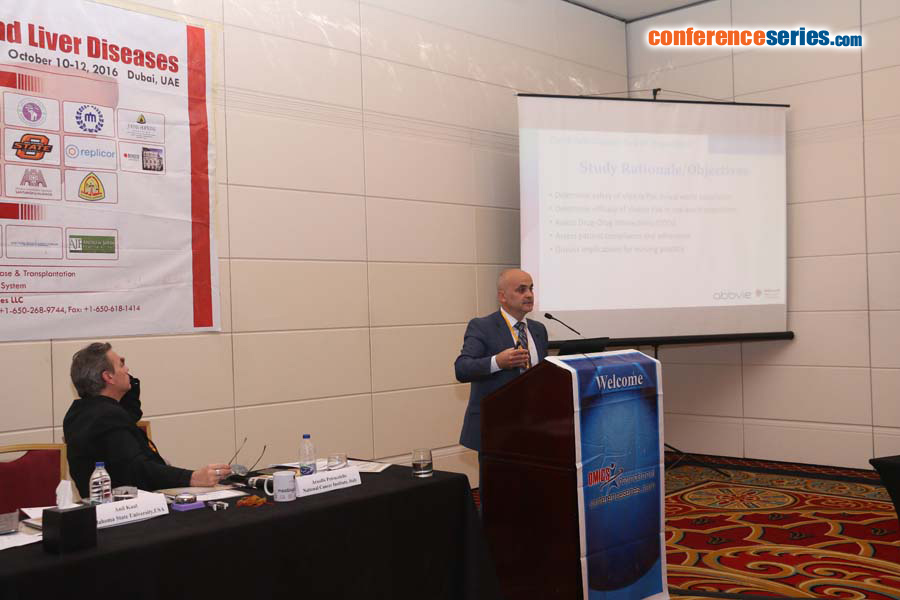
Fragomeli V
Nepean Hospital, Australia
Title: Treating patients with hepatitis C genotype 1 using Viekira Pakâ„¢ in the real world: An Australian nursing perspective
Biography
Biography: Fragomeli V
Abstract
Introduction: Viekira Pak™ (paritaprevir/ritonavir/ombitasvir, dasabuvir) +/- ribavirin was provided to patients with hepatitis C genotype 1 via a Special Access Scheme (SAS) in Australia prior to Pharmaceutical Benefit Scheme listing. Published data demonstrated good safety and efficacy in clinical trials with SVR (sustained virological response) rates above 90%.
Aim: The aim of this nurse-led study is to assess the efficacy and safety of Viekira Pak™ in a “real world” clinical setting and to gain insight into nursing perspectives as Australia progresses towards an interferon free era. To the authors’ best knowledge, this is the first study of its kind examining SVR rates in the “real world” from a nursing perspective.
Methods: Data was collected from 140 patients across eight Australian Liver Clinics. Baseline characteristics, pathology results, adherence, compliance, treatment outcomes and adverse events were recorded and analyzed using an approved data collection template.
Results: Mean age 56 years, mean weight 84.4 kg, 65.0% male, 95.0% Caucasian, 2.9% Indigenous Australian, 2.1% Asian. 64.3% had genotype 1a, 50.7% treatment naive, 18.6% prior null-response, 77.9% had cirrhosis. Sustained virological response (SVR12) rate 95.0% (n=133). 6 patients did not achieve an SVR12 due to virological failure (n=1), relapse (n=1), lost to follow-up (n=1) premature discontinuation (n=4). 126 (90.0%) patients reported adverse events, mainly mild to moderate fatigue, nausea and headache. Bilirubin elevation was observed in 47.9% of patients; grade 4 in 3 patients (2.1%). Serious adverse events in 19 (13.6%) participants, hyperbilirubinemia (n=8), decompensation (n=2) and anemia (n=1), resulting in hospitalization, no deaths reported. One potential drug-drug interaction was identified resulting in lithium toxicity. Patients were predominantly reviewed by nurses with an average (mean) of 5.1 clinic visits from week 1 to week 12 post treatment. 85.0% of patients attended all scheduled visits. 85.0% of patients reported 100% adherence to medication.
Conclusion: This “real world” analysis of Viekira Pak™ demonstrated high SVR rates similar to those achieved in clinical trials. Participants reported excellent treatment adherence, compliance and tolerability of Viekira Pak™. Reported adverse events were mainly mild to moderate intensity and serious adverse events were rare. The potential for drug-drug interactions (DDI’s) highlight the need for adequate monitoring of patients whilst on treatment. This study supports the implementation and utilization of a nursing model of care to treat patients with chronic HCV in the Direct Acting Antiviral (DAA) era. The implementation of a nursing model of care has a far reaching impact in the global ability to reduce the worldwide burden of HCV by facilitating the rapid and safe treatment uptake for HCV patients undergoing HCV therapy.
Speaker Presentations
Speaker PPTs Click Here




